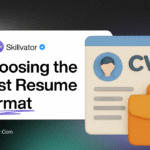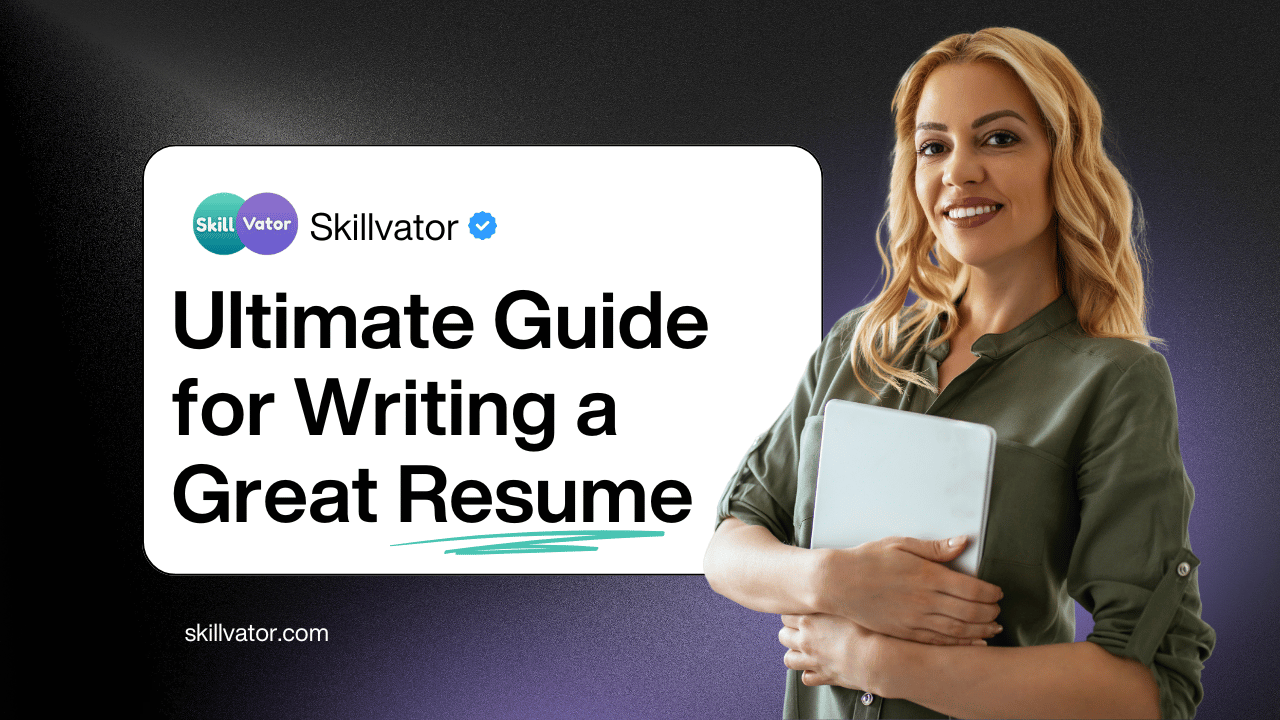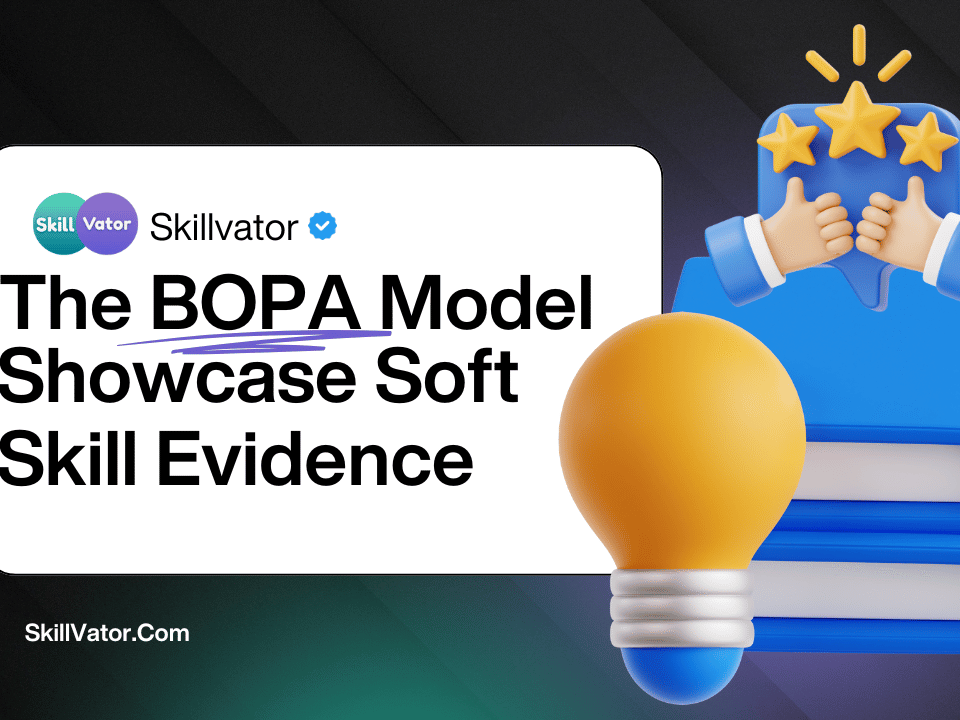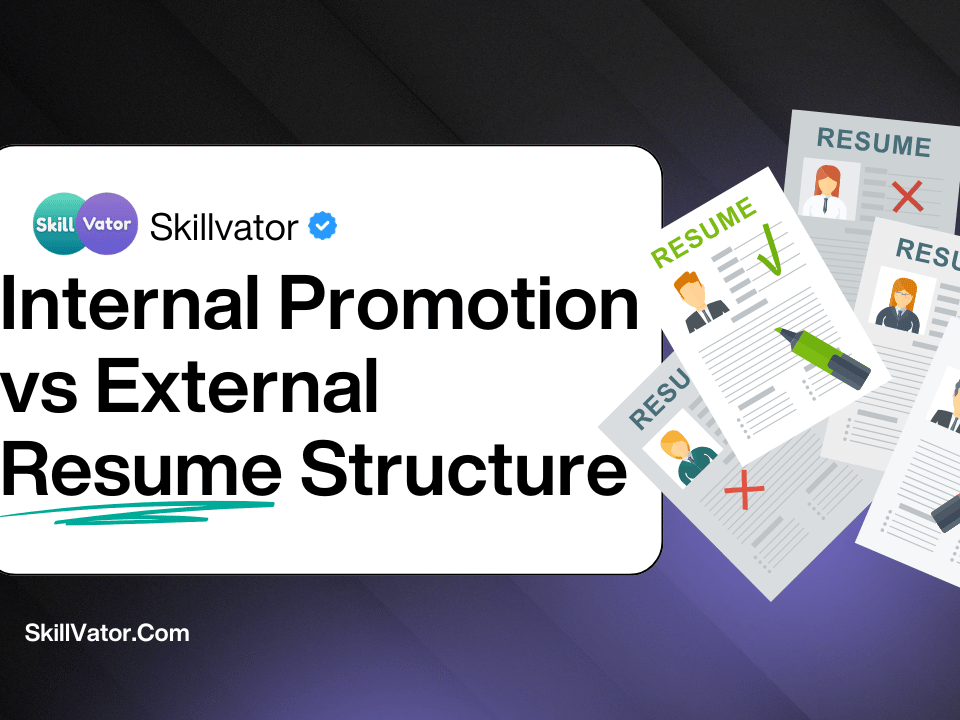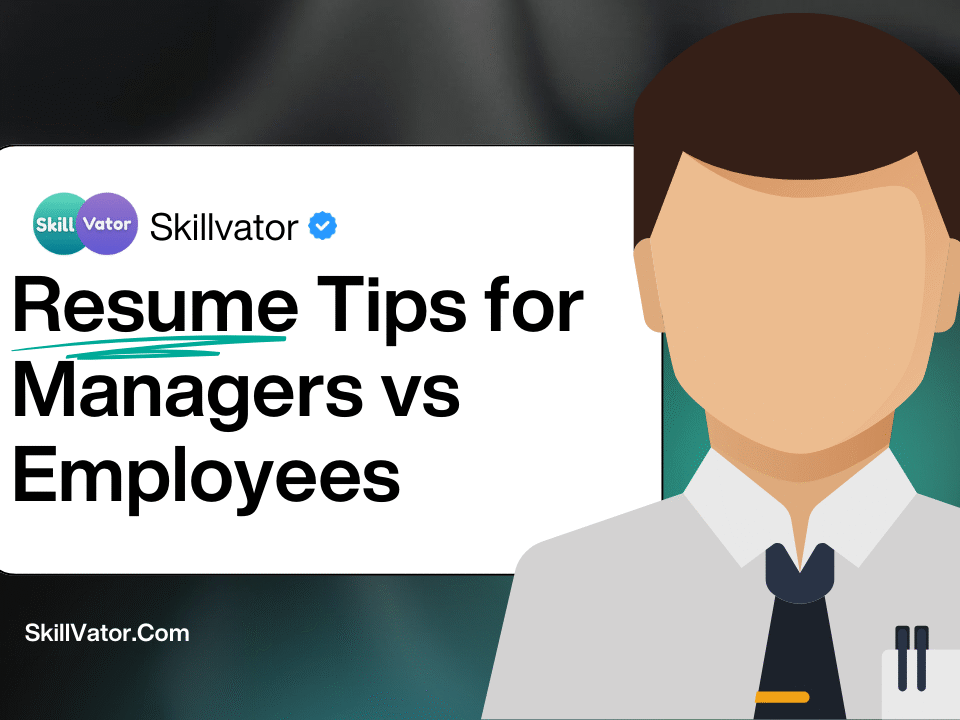Master resume building for career growth. Get expert tips on choosing formats, highlighting skills, and writing a resume that stands out to recruiters and gets you hired.
Welcome to Skillvator, where we’re dedicated to helping you master the skills you need to achieve your career goals. Your resume is more than just a document; it’s your personal marketing tool, a reflection of your professional story, and the key that opens the door to new opportunities. In today’s competitive job market, a powerful, well-structured resume is essential for standing out from the crowd.
As a certified professional, I understand that the process of building a resume can feel daunting, but with the right approach, you can create a document that truly represents your value. This guide will walk you through everything you need to know, from choosing the right format to tailoring your resume for specific roles and even leveraging it for a career change.
Best Resume Formats for Different Job Roles
Choosing the right format is the first step to making a strong impression. The ideal structure depends on your career stage and the industry you’re targeting.
When it comes to resumes, one size doesn’t fit all. The best resume format depends on your career stage, the job you’re applying for, and the skills you need to highlight. Choosing the right structure can make the difference between getting noticed or getting overlooked.
Below, we break down the most effective resume formats and how they align with different job roles.
For a deeper dive into tailoring your resume for success, read our pillar guide:
Choosing the Best Resume Format for Your Job Role
1. Chronological Resume Format
Best for: Professionals with a steady career path in the same field.
Why it works: Employers see your career growth and stability.
Key features:
-
Lists work experience in reverse chronological order
-
Highlights promotions and tenure
-
ATS-friendly and widely recognized by recruiters
Ideal for: -
Engineers
-
Teachers
-
Accountants
-
Administrative professionals
2. Functional Resume Format
Best for: Career changers or those with employment gaps.
Why it works: Emphasizes skills over work history.
Key features:
-
Organizes experience by skill category
-
Downplays dates and job titles
-
Focuses on capabilities rather than job timeline
Ideal for: -
Freelancers
-
Creative professionals
-
Recent graduates with internships
3. Hybrid (Combination) Resume Format
Best for: Candidates with a strong mix of skills and experience.
Why it works: Combines chronological work history with a strong skills section.
Key features:
-
Starts with a skills summary
-
Follows with detailed job history
-
Balances accomplishments with context
Ideal for: -
Project managers
-
Marketing specialists
-
IT professionals
4. Targeted Resume Format
Best for: Applying to a specific role in a niche field.
Why it works: Tailors every section to match the exact job requirements.
Key features:
-
Custom professional summary
-
Skills and achievements aligned to job posting
-
Highly focused keywords for ATS scanning
Ideal for: -
Senior executives
-
Specialized technical roles
Pro tip: Your resume format should match your career story. The wrong format can hide your strengths; the right one can amplify them.
Common Resume Mistakes and How to Fix Them
Read the Specialized article : Common Resume Mistakes and How to Fix Them and start transforming your resume into a document that opens doors.
Your resume is often your first introduction to a potential employer—and it has just seconds to make the right impression. Unfortunately, even skilled professionals sabotage their chances with avoidable mistakes that stop them from landing interviews.
we see the same pitfalls repeatedly: generic, one-size-fits-all resumes, vague buzzwords without proof, poor ATS optimization, and formatting that’s hard to read. Other errors, like outdated contact information, skipping proofreads, or failing to highlight career progression, quietly erode your credibility.
Even the smallest error can cost you a chance at an interview. Here are some of the most frequent resume mistakes and how to avoid them:
- Typos and Grammatical Errors: Proofread your resume multiple times and ask a friend or mentor to review it. Use online tools to check for errors.
- Lack of Specificity: Instead of using vague phrases like “responsible for,” quantify your achievements with numbers and percentages. For example, “managed a team of 10” is good, but “managed a team of 10 and increased productivity by 15% through a new workflow” is much better.
- Generic Content: Every resume should be tailored for a specific job. Avoid using the same generic resume for every application. Instead, use keywords from the job description to highlight your most relevant experience.
16 Common Resume Mistakes (Brief Overview)
| # | Mistake | Quick Fix |
|---|---|---|
| 1 | One-size-fits-all resume | Tailor each application |
| 2 | Buzzwords without proof | Add measurable results |
| 3 | Ignoring ATS rules | Use standard headings, avoid complex layouts |
| 4 | Listing duties, not achievements | Quantify impact |
| 5 | Poor formatting | Keep clean, use bullets |
| 6 | Ignoring soft skills | Show examples in context |
| 7 | Unexplained employment gaps | Highlight productive activities |
| 8 | Unprofessional email | Use a professional format |
| 9 | Missing role keywords | Include LSI and job-specific terms |
| 10 | No location relevance | Add city, state, local references |
| 11 | Outdated contact info | Update before applying |
| 12 | Writing in first person | Use implied first person |
| 13 | Irrelevant experience | Focus on relevant history |
| 14 | No career progression shown | Highlight promotions & growth |
| 15 | Generic file name | Use Name_Resume_Year |
| 16 | No final proofread | Review and peer check |
The good news? Every mistake is fixable—and fixing them not only improves your resume’s effectiveness but can also turn it into a career growth tool. By learning how to optimize keywords, quantify achievements, present a clear career story, and tailor content for each role, you can move from overlooked applicant to top candidate.
This comprehensive guide covers 16 of the most common resume mistakes in 2025, why they hurt your chances, and exactly how to correct them. Whether you’re a recent graduate, experienced professional, or leader aiming for your next role, you’ll learn strategies that work for both human recruiters and AI-powered Applicant Tracking Systems.
3.How to Write a Results-Driven Resume
Hiring managers want to see the impact you’ve made, not just a list of your duties. A results-driven resume focuses on your accomplishments and how they benefited your previous employers.
- Use the CAR Method: This simple formula helps you frame your accomplishments: Challenge, Action, Result.
- Challenge: What was the problem or goal?
- Action: What did you do to address it?
- Result: What was the positive outcome?
- Quantify Everything: Use metrics wherever possible. Examples include “increased sales by 20%,” “reduced costs by $50,000,” or “improved customer satisfaction ratings from 80% to 95%.”
A results-driven resume focuses on measurable achievements, not just job duties, to show employers the real impact you’ve made. By using metrics, action verbs, and targeted keywords, you can create a resume that grabs attention, passes ATS filters, and boosts interview calls.
Read the Exclusive Blog article: How to Write a Results-Driven Resume
4.Resume Tips for Managers vs. Employees
The content of your resume should change as you grow in your career.
- For Employees: Focus on individual contributions and tangible results. Highlight how your skills and actions directly contributed to the success of your team or company projects.
- For Managers: Shift the focus from individual tasks to leadership, strategy, and team development. Emphasize your ability to lead and mentor a team, manage projects, and achieve organizational goals. Mention metrics related to team performance, project delivery, and business growth.
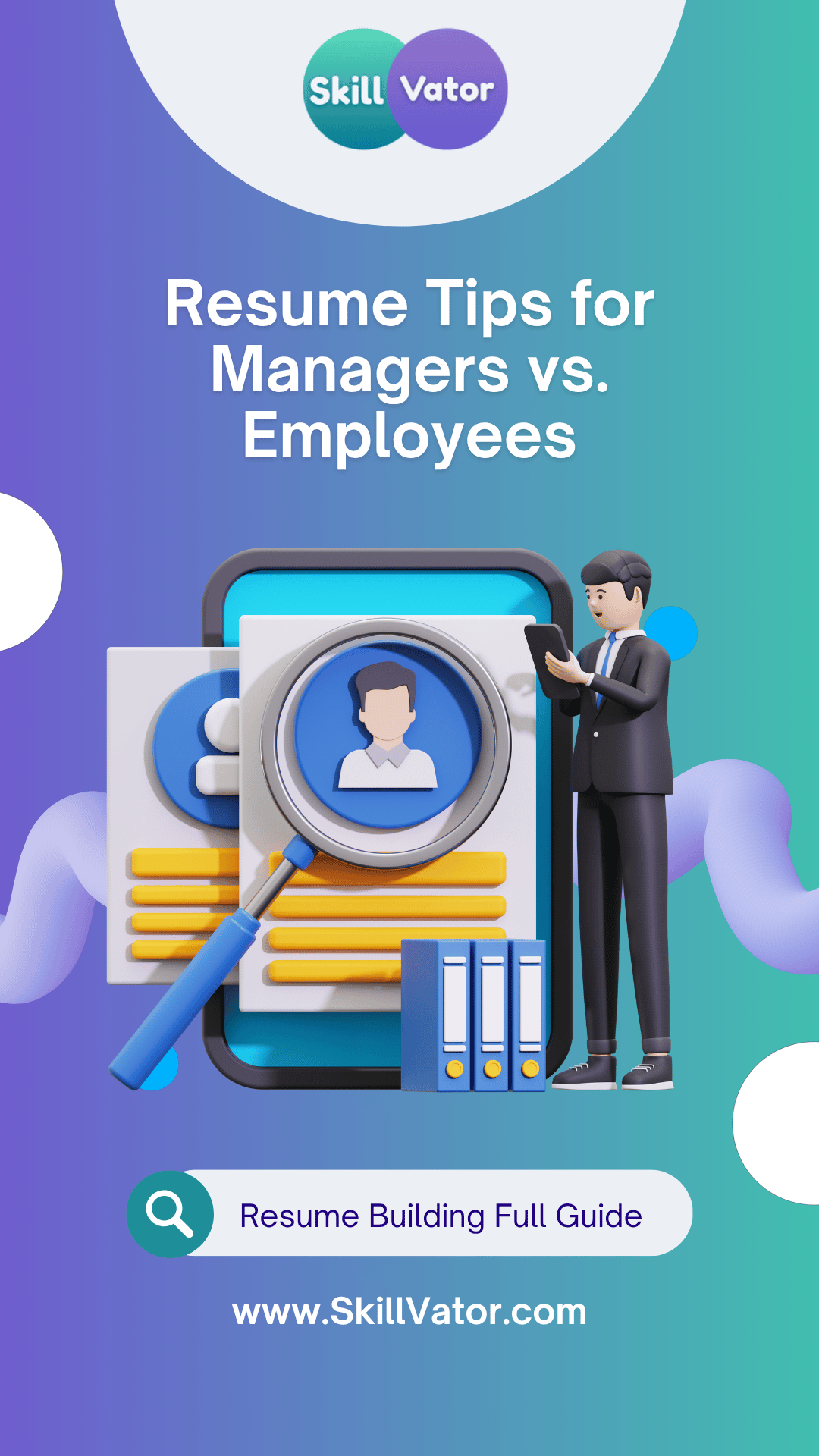
5.Highlighting Soft Skills in Your Resume
Soft skills are the attributes that make you a great employee, such as communication, teamwork, and problem-solving. While they are often hard to quantify, they are highly valued by employers.
- Integrate them into your experience: Instead of listing soft skills in a separate section, weave them into your bullet points. For example, instead of saying “communication skills,” write “Collaborated with cross-functional teams to launch a new product.”
- Create a “Key Skills” section: A dedicated section at the top of your resume can list relevant soft skills, making them easy for recruiters and applicant tracking systems (ATS) to spot.
Whether you want to master a software tool, improve your public speaking, or learn a new language, this method works. In just half an hour a day, you can build momentum, stack skills, and create career opportunities that once felt out of reach.
Read the full strategy here: How to Build a Skill in Just 30 Minutes a Day and start turning daily habits into lifelong advantages.
Internal Promotion vs. External Resume Structure
The resume you use for an internal promotion should differ from the one you use to apply externally.
- Internal Promotion: You can assume the company knows your basic work history. Focus on achievements that showcase your readiness for the new role, demonstrate leadership potential, and highlight how you’ve already contributed to the company’s success.
- External Application: This is your chance to make a first impression. Your resume needs to be comprehensive and clearly explain your skills, experience, and accomplishments in a way that is easily understood by a new employer.
Tools to Build Your Resume Online
Leverage technology to simplify the resume-building process. Many online tools offer templates, writing tips, and formatting assistance to help you create a professional-looking resume.
- Canva: Offers a wide variety of visually appealing templates.
- Enhancv: Provides AI-powered feedback and customizable layouts.
- Zety: Guides you through the process with a step-by-step builder.
Real Resume Reviews with Expert Feedback
At Skillvator, we believe in a hands-on approach. We will soon be offering a service where we provide real resume reviews with expert feedback. This personalized service will help you identify areas for improvement and transform your resume into a powerful document that gets noticed.
How to Turn Your Resume into a Powerful LinkedIn Profile
Your resume and LinkedIn profile should work together to tell a cohesive professional story.
- Expand on Your Resume: Don’t just copy and paste. Use your LinkedIn profile to provide more detail about your projects, skills, and accomplishments.
- Optimize for Search: Use keywords in your headline and summary that are relevant to your career field.
- Add a Professional Photo: A high-quality headshot makes your profile more engaging and trustworthy.
Preparing Your Resume for a Job Switch
Switching careers requires a strategic approach to your resume.
- Focus on Transferable Skills: Identify the skills from your previous roles that are most relevant to your new target industry.
- Write a Compelling Summary: Use a strong professional summary at the top to explain your career transition and highlight your passion and value to the new field.
By focusing on these key areas, you can build a resume that not only gets you noticed but also effectively communicates your unique value to any potential employer. Your career journey is important, and Skillvator is here to support you every step of the way.
Conclusion
Your resume is a living document that should evolve with your career. By focusing on results, tailoring it for each opportunity, and understanding the nuances of different formats, you transform it from a simple list of jobs into a compelling argument for why you are the best candidate.
At Skillvator, we believe that building these foundational career skills is the key to unlocking your true potential.
What is the best resume format for 2025?
The Combination/Hybrid format is often best for 2025. It allows you to lead with a powerful skills summary to immediately capture attention, while still providing the chronological work history that recruiters and ATS systems expect.
Should I put a photo on my resume?
This depends on your geography. In the US, UK, and Canada, you should not include a photo to avoid potential bias. In many parts of Europe and Asia, a professional headshot is standard. Always research local conventions.
What is an ATS-friendly resume?
An ATS-friendly resume uses a clean, simple layout without columns, tables, or excessive graphics. It uses standard fonts (like Arial, Calibri, or Times New Roman) and includes keywords from the job description. The best formats for ATS are Chronological and Combination.
How long should a resume be?
For most professionals, a one-page resume is ideal. It forces you to be concise and highlight only the most relevant information. If you have extensive experience (10+ years), a two-page resume can be acceptable, but ensure every detail is valuable and relevant to the job you’re applying for.
What is a results-driven resume?
A results-driven resume focuses on your accomplishments rather than just your duties. It quantifies your impact using metrics and numbers to show how your actions benefited previous employers. This approach makes your resume more compelling and proves your value.
Should I use a chronological or functional resume format?
The chronological format is best for a steady career path within one industry. The functional format, which emphasizes skills over work history, is a good choice if you have employment gaps or are changing careers. For most people, a hybrid format that combines both is often the most effective.
How do I highlight soft skills on my resume?
Instead of listing soft skills in a separate section, integrate them directly into your work experience bullet points. For example, instead of writing “Teamwork,” you could write, “Collaborated with a cross-functional team to successfully launch a new product on time.”
What are the most common resume mistakes?
Common mistakes include having typos and grammatical errors, being too generic, and failing to quantify achievements. To fix these, proofread carefully, tailor your resume for each job, and use the CAR method (Challenge, Action, Result) to write a results-driven resume.
How do I prepare my resume for a career change?
For a career change, use a hybrid or functional resume format to highlight your transferable skills. Write a compelling professional summary at the top that explains your transition and showcases your passion and potential for the new industry.
Is a separate resume needed for an internal promotion?
Yes, a resume for an internal promotion should be structured differently. Since your company knows your basic history, you should focus on achievements and projects that demonstrate your leadership potential and readiness for the new role, rather than listing every past duty.
How can I turn my resume into a powerful LinkedIn profile?
Expand on the details from your resume, using the LinkedIn platform to provide more context about your projects and accomplishments. Optimize your headline and summary with industry-specific keywords and ensure you have a professional profile photo.
What’s the difference between a resume for a manager and an employee?
A manager’s resume should emphasize leadership, strategic planning, and team development, with metrics focused on team performance and project success. An employee’s resume should highlight individual contributions and specific, quantifiable results.
What are some good online tools to build a resume?
Popular online resume-building tools include Canva, Enhancv, and Zety. These platforms offer a variety of templates, writing tips, and formatting options to help you create a professional and visually appealing resume.


